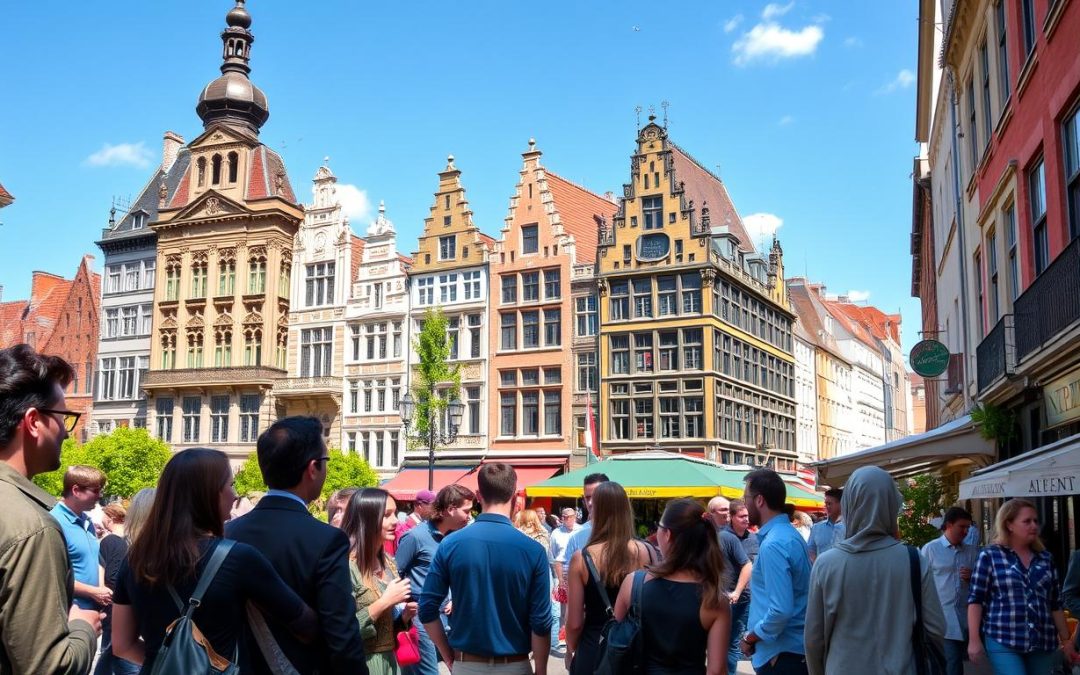Have you ever wondered how a small European country manages to thrive with multiple official languages? Belgium stands as a fascinating linguistic puzzle, where communication transcends traditional boundaries.
Belgium’s linguistic diversity is a testament to its complex cultural heritage. With three official languages – Dutch, French, and German – the country represents a unique blend of linguistic communities. Dutch dominates as the most spoken primary language, accounting for approximately 59% of the population, while French follows closely at around 40%.
The linguistic landscape of Belgium is not just about communication – it’s about identity. Each language region reflects a distinct cultural identity. From the Dutch-speaking Flanders in the north to the French-speaking Wallonia in the south, and the small German-speaking community in the east.
Key Takeaways
- Belgium has three official languages: Dutch, French, and German
- More than 50% of Belgians are bilingual
- Dutch is spoken by approximately 59% of the population
- French is the second most spoken language, used by around 40%
- The German-speaking community represents less than 1% of the population
Understanding Belgium’s Linguistic Landscape
Belgium is a unique example of multilingual complexity. Here, languages are deeply woven into the nation’s culture. Exploring this environment shows a rich mix of communication and identity.
Historical Development of Language Regions
The Belgian language scene has changed a lot over time. French was the main language in government and schools until the late 1800s. Then, Dutch speakers started to get more recognition, changing the cultural and political scene.
- French was the only language used in government until the late 1800s
- Dutch speakers fought for their rights and a say in politics
- Political movements played a big role in setting language boundaries
Current Language Distribution
Today, Belgium is known for its language diversity. The people are divided into different language groups:
| Language | Percentage | Approximate Population |
|---|---|---|
| Dutch (Flemish) | 60% | 6.5 million |
| French | 40% | 4.5 million |
| German | 1% | 75,000 |
Constitutional Framework
The Belgian Constitution protects language rights. It helps public officials and gives private citizens freedom to speak their language. This ensures that Dutch, French, and German speakers can express themselves freely.
“Language is the road map of a culture. It tells you where its people come from and where they are going.” – Rita Mae Brown
Exploring Belgium’s language scene shows a nation where communication is more than words. It’s about culture and a long fight for recognition.
Dutch (Flemish) as Belgium’s Most Spoken Language
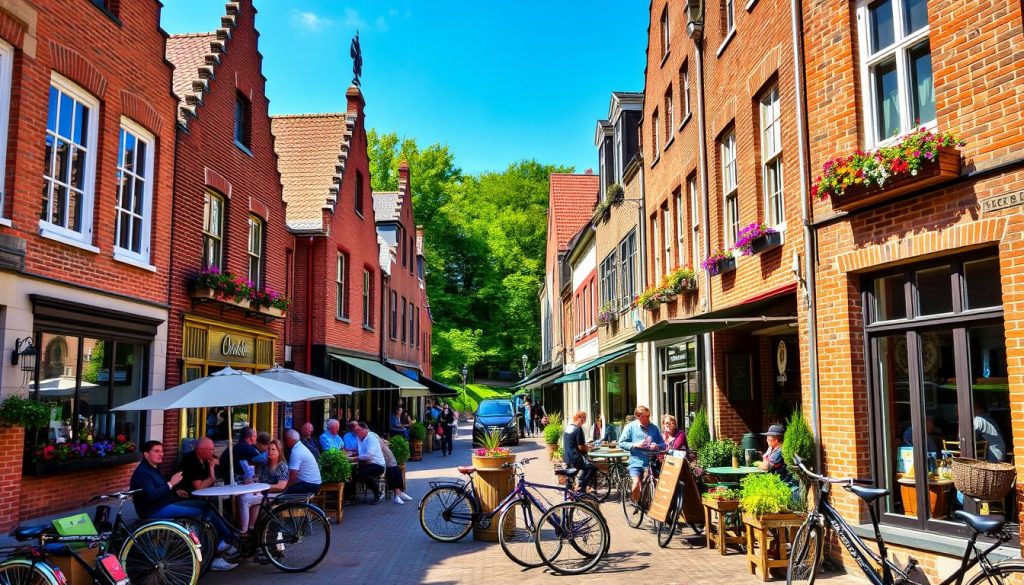
In Belgium, Dutch is the main language, spoken by about 60% of people. It’s known as Flemish in the Flanders region. This language is a big part of Belgium’s culture.
The Dutch spoken in Belgium is very similar to the Dutch in the Netherlands. But, there are small differences in how it’s spoken and the words used. Flemish dialects show the area’s rich cultural history.
“Language is the road map of a culture. It tells you where its people come from and where they are going.” – Rita Mae Brown
Key Characteristics of Flemish Dutch
- Spoken by roughly 6.5 million people
- Official language in Flanders provinces
- Includes unique regional dialects
- Closely related to standard Dutch
In five provinces, Flemish Dutch is very common. These are Antwerp, Flemish Brabant, Limburg, East Flanders, and West Flanders. Schools in these areas teach mainly in Dutch.
Regional Language Distribution
| Region | Primary Language | Percentage of Speakers |
|---|---|---|
| Flanders | Dutch (Flemish) | 60% |
| Brussels Capital Region | Bilingual (French/Dutch) | Varies |
| Wallonia | French | 40% |
Learning Flemish Dutch is more than just talking. It opens the door to understanding Belgium’s culture. The language is always changing, shaped by its Germanic roots and French neighbors.
French Language in Belgium: Impact and Usage
In Belgium, the French language is a key part of the country’s culture. About 40% of Belgians speak French, mainly in Wallonia and Brussels. This shows how French is deeply rooted in the country.
French in Belgium is more than just talking. It has its own special way of speaking, different from France. These belgicisms show the country’s rich language diversity.
French-Speaking Regions
The main French-speaking areas are:
- Wallonia: The southern region with about 3.6 million French speakers
- Brussels: A bilingual capital with a big French-speaking population
- Small pockets of French speakers in border regions
Belgian French vs Standard French
Belgian French is special because of its own words, sounds, and sayings. These local expressions show the region’s culture, making Belgian French unique.
“Language is the roadmap of a culture. It tells you where its people come from and where they are going.” – Rita Mae Brown
Cultural Influence
The French language shapes Belgian culture. It’s used in books, media, and daily talks. French helps keep regional identities alive.
Belgium’s language mix is complex and interesting. It shows the country’s rich history and culture.
German-Speaking Community in Belgium
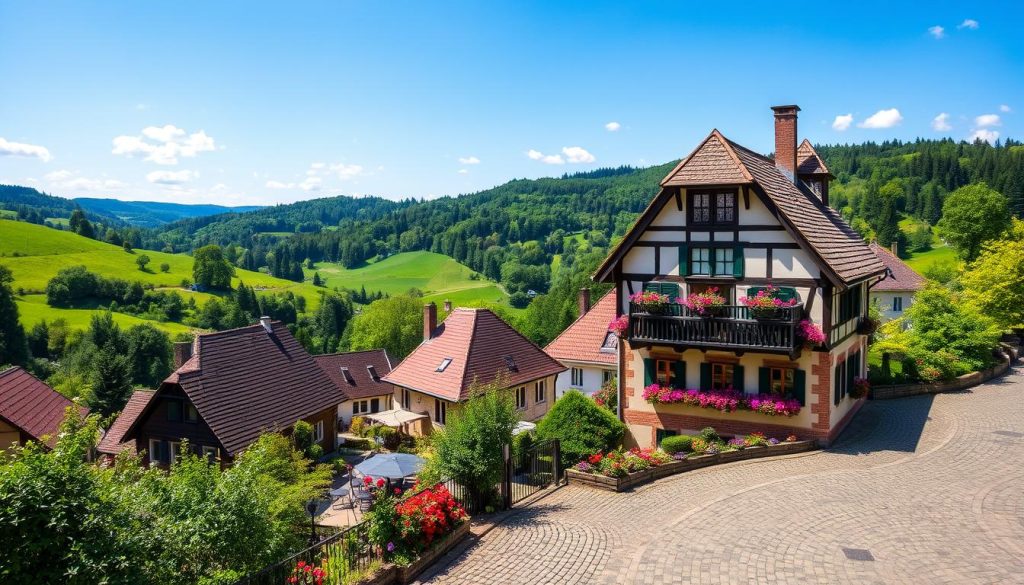
In eastern Belgium, there’s a special group of people who speak German. They are part of a small but vibrant community. This group has its own culture and strong sense of identity.
This community covers 854 km² and has about 79,479 residents. They live mainly in the eastern cantons. After World War I, they became part of Belgium, making their area unique.
“Language is the road map of a culture. It tells you where its people come from and where they are going.” – Rita Mae Brown
Here are some key facts about this community:
- They make up about 0.7% of Belgium’s population
- They live in 9 municipalities
- There are 93 people per km²
- 21.1% of the population are foreign residents
The German-speaking region is economically strong. Manufacturing is a big part of their economy, making up 21.7% of their gross value added. This shows how important they are to Belgium’s economy.
Even though they are small, they play a big role in Belgium’s language and culture. They show Belgium’s dedication to language diversity and regional freedom. This ensures that even the smallest groups are recognized and protected.
Belgium: Official and Widely Spoken Languages
Belgium is known for its rich language diversity. This diversity shows the country’s deep cultural roots. It balances official languages and local communication needs well.
Language Rights and Regulations
In Belgium, language rights are well-protected by law. The official languages – Dutch, French, and German – are key to keeping the country balanced.
- Dutch is spoken by about 58% of the people
- French is used by around 40% of Belgians
- German speakers make up less than 1% of the population
Administrative Language Use
In Belgium, language use in administration is strict. Each community can use their native language in their area.
| Region | Primary Language | Administrative Usage |
|---|---|---|
| Flanders | Dutch | Exclusively Dutch |
| Wallonia | French | Exclusively French |
| Brussels | Bilingual | Dutch and French |
| East Cantons | German | Primarily German |
Educational System Requirements
Belgium’s schools reflect its language diversity. They must teach in the local language, ensuring students learn well.
“Language is the road map of a culture. It tells you where its people come from and where they are going.” – Rita Mae Brown
Knowing an official language is key for jobs in Belgium. The country values its language diversity, making education and work places unique and multilingual.
Brussels: A Unique Bilingual Capital
Brussels is a fascinating multilingual hub in the heart of Belgium. This vibrant capital city shows the complex mix of Dutch and French languages. With a population of 1,222,637 in the Brussels-Capital Region, it’s a melting pot of cultures and languages.
The language scene in Brussels is interesting. Although it’s officially bilingual, French is more common in daily talks. Over time, Brussels has shifted from mostly Dutch-speaking to French-dominant.
“Brussels is not just a city, it’s a linguistic crossroads where two languages dance together.” – Belgian Language Researcher
- Officially bilingual city with both Dutch and French recognized
- Approximately 60% of Belgian population speaks Dutch
- About 40% uses French, particularly in Brussels and Wallonia
- Unique administrative status bridging linguistic communities
Brussels is more than just languages. It’s the center for both Flemish and French-speaking communities. This diversity shows Belgium’s rich cultural heritage, where communication goes beyond language.
Exploring Brussels, you’ll see signs and documents in both Dutch and French. It shows Belgium’s effort to include everyone and foster understanding.
Regional Dialects and Minority Languages
Belgium’s language scene is more than just three official languages. It’s a rich mix of regional languages and dialects. These show the country’s complex cultural background. Exploring Belgium’s language diversity reveals interesting local variations that add life to how people communicate.
The regional languages of Belgium are more than just ways to talk. They are cultural treasures that keep local identities and traditions alive. Even though they’re not officially recognized everywhere, they are key to keeping local cultures strong.
Walloon and Picard: Romance Language Heritage
Walloon, a regional language in southern Belgium, shows the linguistic diversity of Wallonia. It’s a Romance language, like French, spoken for centuries in places like Liège and Namur. Picard, another regional language, has similar traits and is found in the same areas.
- Walloon is mainly spoken in southern Belgium
- It’s historically important in rural Wallonian communities
- It has its own grammar and way of speaking
Germanic Dialects: Limburgish and Luxembourgish
Germanic dialects like Limburgish and Luxembourgish highlight Belgium’s linguistic complexity. These languages show how language can cross national borders.
Preservation Efforts and Cultural Significance
Local groups and language organizations are working hard to save these regional languages. Their efforts help keep these languages alive. They ensure that Belgium’s rich cultural heritage is passed down through generations, using unique ways of speaking.
“Language is the road map of a culture. It tells you where its people come from and where they are going.” – Rita Mae Brown
Language Politics and Social Impact
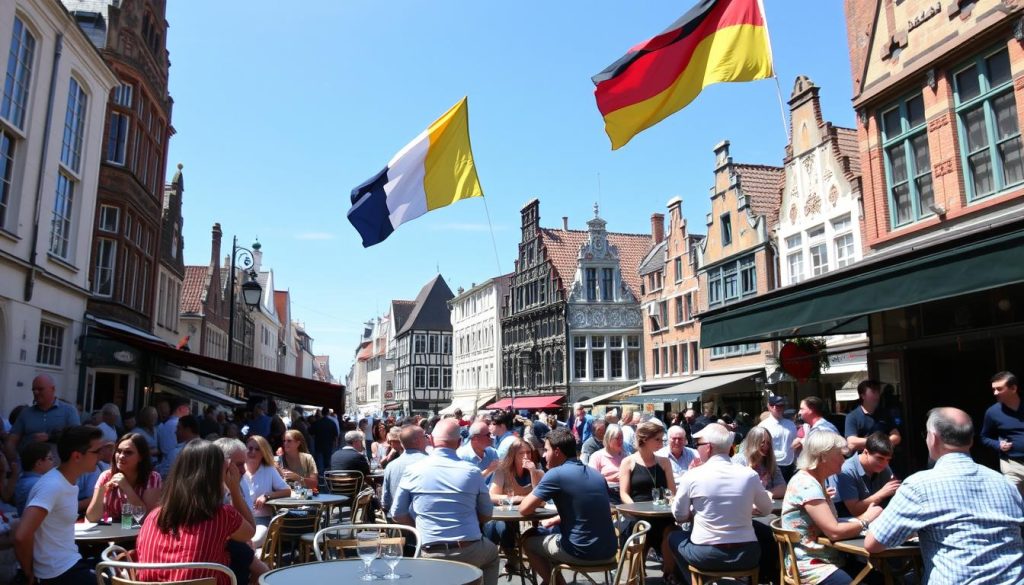
Belgium’s mix of languages makes politics complex. It affects how people interact and see themselves as a nation. The struggle between Dutch and French speakers has deeply influenced the country’s politics and social life.
The language issue in Belgium is more than just talking. It touches many parts of life, including politics, money, culture, and how regions are ruled.
- Political representation
- Economic resource allocation
- Cultural identity formation
- Regional autonomy debates
History plays a big role in these language politics. Different views on past events have split communities. The Flemish and French-speaking people see history in their own ways.
Language is not just a means of communication in Belgium, but a powerful marker of cultural and political identity.
The politics show the struggle with languages. The Flemish nationalist N-VA party talks a lot about changing the constitution and how money is spent. This shows how important language is in Belgian society.
| Linguistic Community | Percentage | Political Influence |
|---|---|---|
| Dutch-speaking | 56% | Strong regional autonomy demands |
| French-speaking | 43.5% | Concentrated in Wallonia and Brussels |
| German-speaking | 0.5% | Limited but distinct community rights |
To get Belgium’s languages, you must see the deep social and political talks. Each group tries to find a balance and understanding.
Multilingualism in Belgian Education
Belgium’s schools show off its rich language mix. They teach students to handle a world full of languages. This education is more than just learning to speak.
Language Learning Requirements
In Belgium, speaking more than one language is key. The way students learn languages changes based on where they live:
- In Flanders, Dutch is the main language, with French as a second.
- In Wallonia, French is the main language, with Dutch as a second.
- The German-speaking community has its own special curriculum.
Professional Life Impact
Knowing many languages can really help your career in Belgium. Over 50% of Belgians speak two languages. This skill is very valuable in the job world.
- Bilingual workers can move between jobs more easily.
- International companies want people who speak many languages.
- Knowing languages can lead to jobs in different areas.
“In Belgium, languages are not just communication tools—they are bridges between cultures and opportunities.” – Belgian Education Expert
The Belgian education system focuses on language diversity. It makes sure students are ready for a world where many languages are spoken. By teaching many official languages, Belgium celebrates communication and understanding between cultures.
English as an Emerging Language in Belgium
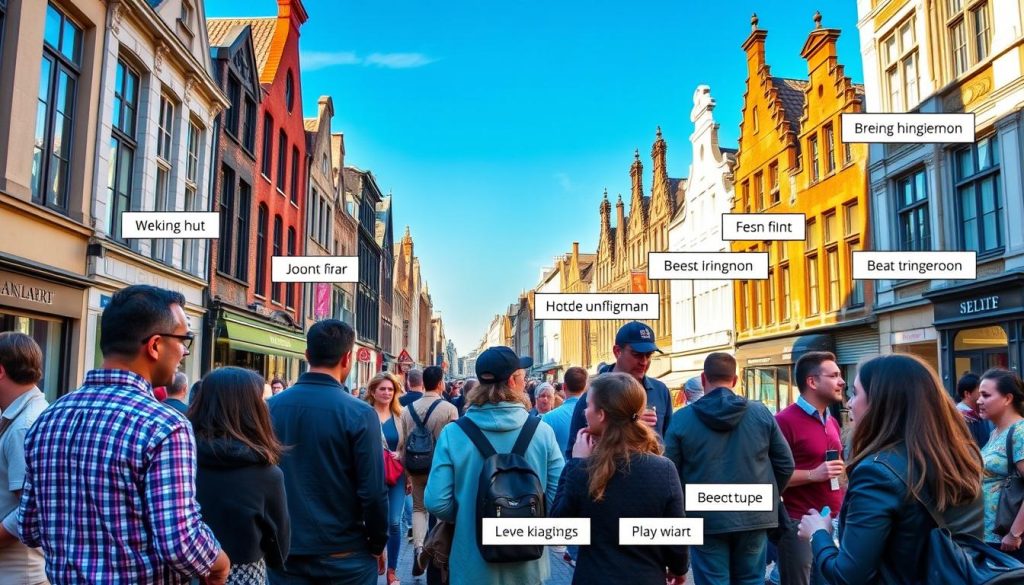
Belgium is becoming more diverse with English becoming more popular. This change is seen especially in cities like Brussels. The country is known for its many languages, and English is now a big part of that.
English is becoming a key language worldwide. Belgium is ranked 6th for English skills, with 55% of people able to speak it well. In Brussels, about 33% of people speak English fluently. This shows how important English is becoming.
“English has become the unofficial fourth language of Belgium, bridging communication gaps in international contexts.”
Here are some key points about English in Belgium:
- It’s widely used in business and professional settings.
- It’s the preferred language in communications for multinational companies.
- It’s becoming more important in higher education.
- It’s the main language for expatriates.
| English Proficiency Metrics | Percentage |
|---|---|
| Conversational English Speakers | 55% |
| Fluent English Speakers in Brussels | 33% |
| Global English Proficiency Ranking | 6th |
Even though English is not an official language, it’s playing a bigger role in Belgium. Companies that work globally often look for people who speak English. This helps English speakers while still respecting the official languages.
Belgium’s use of English shows it’s ready for the world. It shows the country’s openness to different languages and its role in global communication.
Language Communities and Cultural Identity
Belgium’s many languages shape its culture. More than half speak Flemish, and about one-third speak French. This mix creates a rich cultural scene.
Understanding Belgian culture starts with language. Each group, Flemish, Walloon, and German-speaking, has its own culture. They have their own places and traditions.
“Language is the roadmap of a culture. It tells you where its people come from and where they are going.” – Rita Mae Brown
Cultural Expressions by Language Community
- Flemish community: Strong emphasis on literature and visual arts
- Walloon community: Rich traditions in music and theater
- German-speaking community: Unique regional cultural practices
The media shows Belgium’s language diversity. There are Dutch and French TV and papers for each group. This helps keep their cultures alive.
Linguistic Identity Breakdown
| Language Group | Percentage | Cultural Characteristics |
|---|---|---|
| Dutch Speakers | 60% | Northern region, strong economic presence |
| French Speakers | 40% | Southern region, artistic traditions |
| German Speakers | 1% | Eastern cantons, unique regional identity |
Exploring Belgian culture shows language is key. It’s not just about talking. It’s about food, stories, and how people live together.
Conclusion
Belgium is a shining example of linguistic diversity. Here, speaking multiple languages is not just a skill but a way of life. The country is home to Dutch, French, and German speakers, each making up a significant part of the population.
This mix of languages creates a rich cultural heritage. Your exploration of Belgium’s language scene shows a nation that values its linguistic complexity. It’s a place where people adapt easily to different languages.
Belgium faces unique challenges in maintaining its linguistic diversity. Yet, it tackles these with smart social and political strategies. In Brussels, you’ll see how languages blend, creating a vibrant multilingual environment.
Belgians show incredible flexibility in switching between Dutch, French, and English. This skill makes Belgium stand out globally. It’s a testament to the nation’s ability to adapt and thrive.
As the world becomes more interconnected, Belgium shows us how different languages can coexist. The country balances preserving local languages with embracing international communication. This forward-thinking approach to language is truly inspiring.
Belgium’s language scene is set to evolve further. With more people speaking English and a growing international presence, the country is ready for the future. For those interested in language, culture, and diversity, Belgium is a unique place to explore.
The above is subject to change.
Check back often to TRAVEL.COM for the latest travel tips and deals.
Here are some Tours & Sightseeing suggestions that might pique your interests!
